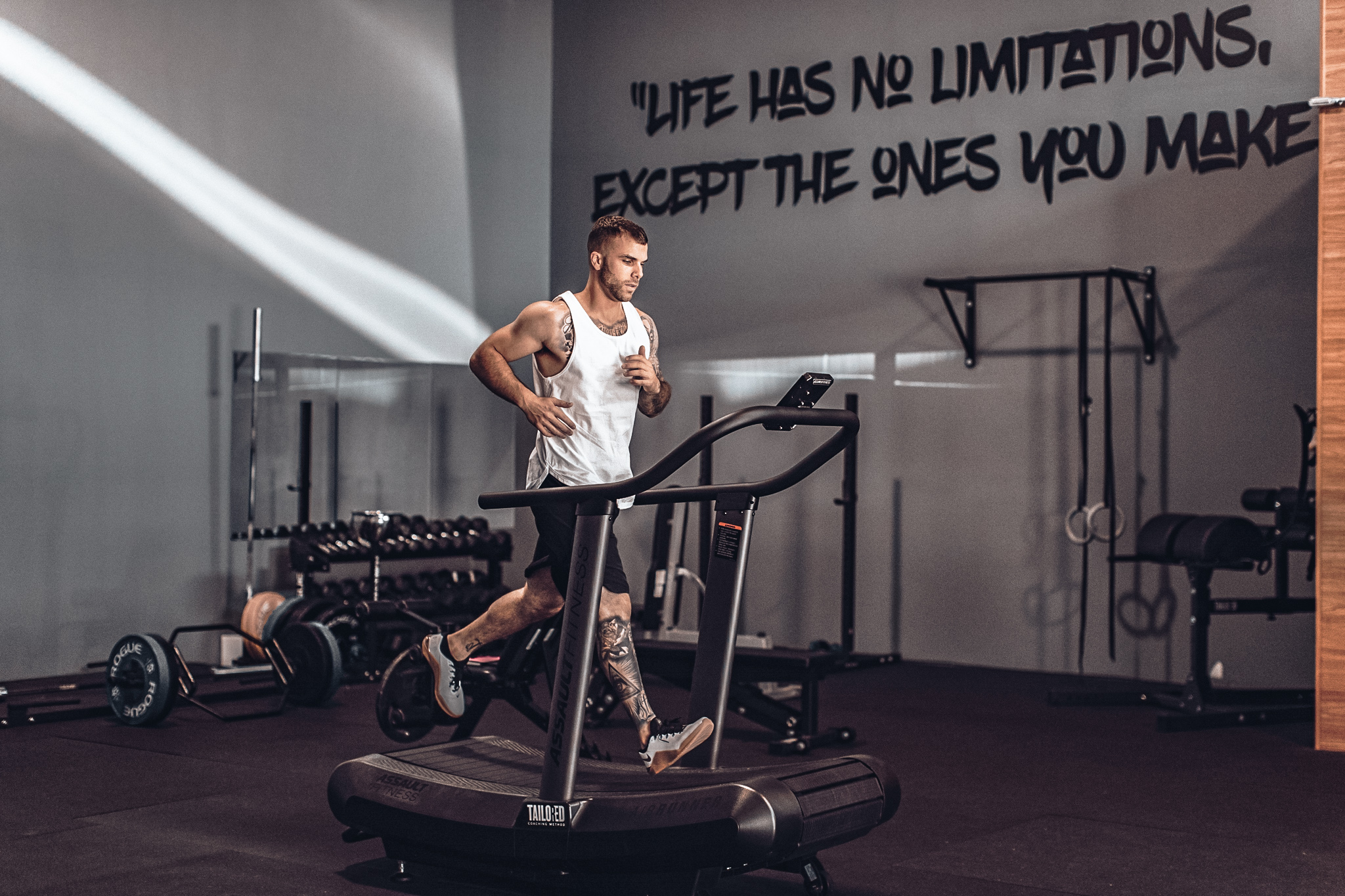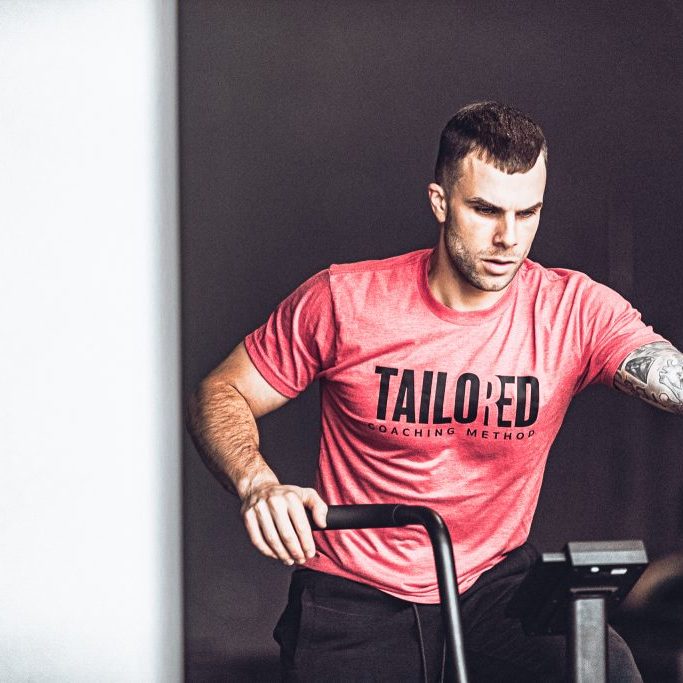The Ultimate Guide to Cardio for Weight Loss provides comprehensive insights into effective strategies for utilizing cardio exercises to achieve weight loss goals. Discover the best cardio exercises, optimal timing, and factors to consider for maximum weight loss potential. Increase calorie burn, improve heart health, boost metabolism, reduce stress, and improve endurance with cardio workouts. Determine the right duration and intensity levels, and find a balance between cardio and strength training for a well-rounded fitness routine.
In “The Ultimate Guide to Cardio for Weight Loss,” gain comprehensive insights into the most effective strategies for utilizing cardio exercises to achieve your weight loss goals. Explore the link provided to discover an array of informative content that delves into topics such as the best cardio exercises for weight loss and the optimal time to engage in cardio workouts. This guide offers invaluable knowledge and practical tips to help you make informed decisions about incorporating cardio into your fitness routine to maximize weight loss potential.

Types of Cardio Exercises
High-Intensity Interval Training (HIIT)
High-Intensity Interval Training (HIIT) is a cardiovascular exercise that involves alternating between short bursts of intense exercise and brief periods of rest or low-intensity activity. This type of workout is known for its ability to maximize calorie burn in a short amount of time. HIIT workouts can be tailored to individual fitness levels and can include exercises such as burpees, mountain climbers, and high knees.
Running
Running is a popular form of cardio exercise that can be done both indoors on a treadmill or outdoors. It is a highly efficient way to burn calories and improve cardiovascular fitness. Running engages multiple muscle groups, primarily the lower body, and can be adapted to different fitness levels by varying the distance, speed, and incline. Additionally, running can be done solo or with a group, making it a versatile and enjoyable exercise option.
Cycling
Cycling, whether outdoors or on a stationary bike, is a low-impact cardio exercise that can be suitable for individuals of all fitness levels. It targets the lower body muscles, including the quadriceps, hamstrings, and glutes, while providing an excellent cardiovascular workout. Cycling can be done at various intensities, such as leisurely biking or high-intensity interval training (HIIT) on a stationary bike, offering flexibility in tailoring the workouts to personal preferences and goals.
Swimming
Swimming is a full-body cardio exercise that provides a low-impact workout while engaging all major muscle groups. It is a particularly beneficial form of cardio for individuals with joint issues or injuries. Swimming can be done at various intensity levels, from leisurely laps to high-intensity interval training, making it suitable for individuals of different fitness levels. Additionally, swimming offers a refreshing and enjoyable way to burn calories and improve cardiovascular health.
Rowing
Rowing is an effective and engaging full-body cardiovascular exercise that utilizes both the upper and lower body muscles. Whether using a rowing machine or rowing outdoors in a boat, this exercise targets the back, legs, and core while providing a low-impact workout. Rowing combines strength and endurance training and can be adjusted to different intensity levels by varying the speed, resistance, and duration of the exercise.
Jumping Rope
Jumping rope is an inexpensive and convenient cardio exercise that can be done anywhere. It is a high-impact exercise that engages the whole body while increasing heart rate and burning calories. Jumping rope also helps to improve coordination, agility, and endurance. This exercise can be modified by adjusting the speed and intensity, making it suitable for individuals at various fitness levels.
Stair Climbing
Stair climbing is a challenging and effective cardio exercise that can be done using a flight of stairs or a stair-climbing machine. It targets the lower body muscles, including the quadriceps, hamstrings, and glutes, while increasing heart rate and burning calories. Stair climbing can be personalized by changing the speed, intensity, and duration of the exercise, providing a versatile workout option.
Elliptical Trainer
The elliptical trainer is a low-impact cardio machine that imitates movements similar to running, walking, and stair climbing. It provides a full-body workout while being gentle on the joints. The resistance and incline of the machine can be adjusted to personalize the intensity of the workout. The elliptical trainer offers a great option for individuals looking to burn calories, improve cardiovascular health, and strengthen their muscles in a controlled and comfortable manner.
Dancing
Dancing is a fun and enjoyable cardio exercise that combines aerobic movements with music. Whether participating in a dance class or simply dancing at home, it can be an effective way to increase heart rate, burn calories, and improve cardiovascular fitness. Dancing engages various muscle groups and helps to enhance coordination, flexibility, and stamina. With a wide range of dance styles to choose from, individuals can find a form of dancing that suits their preferences and allows them to express themselves while getting a great workout.
Boxing
Boxing is a high-intensity cardio exercise that incorporates punches, footwork, and defensive movements. It is an excellent way to build strength, endurance, and cardiovascular fitness. Boxing workouts can be done solo or in a group setting, such as a boxing class or with a personal trainer. In addition to the physical benefits, boxing also helps to relieve stress and improve coordination. This full-body workout can be adjusted to different intensity levels, catering to individuals of various fitness levels.
Factors to Consider
Current Fitness Level
When choosing a cardio exercise, it is important to consider your current fitness level. If you are just starting out, it may be advisable to begin with low-impact exercises such as swimming or cycling, and gradually increase the intensity as your fitness improves. On the other hand, if you already have a moderate to high level of fitness, you may opt for more challenging exercises such as running or HIIT workouts.
Medical Conditions
Individuals with certain medical conditions or injuries may need to take specific considerations into account when selecting cardio exercises. For example, individuals with joint issues may benefit from low-impact exercises like swimming or the elliptical trainer. It is crucial to consult with a healthcare professional to ensure that the chosen cardio exercises are safe and suitable for your specific medical condition or injury.
Goals and Preferences
Your personal goals and preferences should also influence your choice of cardio exercise. If weight loss is your primary goal, high-intensity exercises such as HIIT, running, or boxing may be more effective in burning calories. However, if you prioritize a low-impact and enjoyable workout, activities like swimming or dancing can offer a great way to stay active without placing excessive stress on your joints.
Time Availability
Consider your daily schedule and allocate time for cardio workouts accordingly. Some exercises, such as jumping rope or running, require minimal time and can be easily incorporated into a busy routine. However, longer activities like swimming or cycling may require more time and planning. Choose exercises that can be realistically integrated into your schedule to ensure consistency and maximize the benefits of cardio workouts.
Equipment Accessibility
The availability of equipment can also impact the choice of cardio exercises. Some exercises, like running or dancing, require minimal or no equipment, making them easily accessible to everyone. On the other hand, gym-based exercises such as rowing or using the elliptical trainer may require access to specific equipment. Consider the equipment options and availability when selecting cardio exercises.

Benefits of Cardio for Weight Loss
Increased Calorie Burn
Cardio exercises are highly effective in burning calories, making them a valuable tool for weight loss. By elevating your heart rate and engaging in continuous movement, you can create a calorie deficit that promotes weight loss. The amount of calories burned during cardio workouts depends on various factors such as exercise intensity, duration, and individual body composition.
Improved Heart Health
Regular cardio exercise can improve heart health by strengthening the heart muscle and improving blood circulation. Aerobic activities such as running, swimming, or cycling promote cardiovascular endurance, leading to a lower resting heart rate and decreased risk of heart disease. The American Heart Association recommends at least 150 minutes of moderate-intensity cardio exercise per week for optimal heart health.
Boosted Metabolism
Engaging in regular cardio exercises can help boost metabolism, which is the rate at which your body burns calories at rest. Cardio workouts increase oxygen consumption and energy expenditure during and after exercise, leading to an enhanced metabolic rate. This can contribute to weight loss and make it easier to maintain a healthy body weight.
Reduced Stress and Anxiety
Cardio exercises have proven to be effective in reducing stress and anxiety levels. Physical activity stimulates the production of endorphins, also known as “feel-good” hormones, which help alleviate feelings of stress and anxiety. Engaging in cardio workouts can provide a mental and emotional respite, allowing you to unwind and improve your overall well-being.
Better Sleep Quality
Regular cardio exercise positively impacts sleep quality. Engaging in physical activity during the day can help regulate your sleep-wake cycle and promote deeper, more restful sleep. However, it is recommended to complete your workout at least a few hours before bedtime to allow your body to wind down and prepare for sleep.
Improved Endurance
Consistent cardio exercise can improve muscular endurance and stamina. By progressively challenging your cardiovascular system, you can increase your aerobic capacity and sustain physical activity for longer periods without fatigue. Improved endurance can enhance overall performance in daily activities, sports, and other fitness pursuits.
Duration and Intensity
Determining the Right Duration
The duration of your cardio workouts will depend on factors such as fitness level, goals, and time availability. The American College of Sports Medicine recommends adults engage in at least 150 minutes of moderate-intensity cardio exercise per week, or 75 minutes of high-intensity exercise. To optimize weight loss, it may be beneficial to gradually increase the duration of your workouts. Start with shorter sessions and aim to work your way up to longer exercises as your fitness improves.
Understanding Different Intensity Levels
Cardio exercises can be classified into different intensity levels, including low, moderate, and high intensity. Low-intensity exercises, such as leisurely walking or cycling, allow for prolonged activity without excessive fatigue. Moderate-intensity exercises, like brisk walking, jogging, or swimming, increase heart rate and breathing while still allowing for conversation. High-intensity exercises, such as HIIT or sprint intervals, involve maximum effort and short bursts of intense activity. Understanding these intensity levels can help you design an appropriate workout routine based on your goals and fitness level.
Combining Moderate and High Intensity
To optimize weight loss and overall fitness, it can be beneficial to incorporate a combination of moderate and high-intensity cardio exercises into your routine. Moderate-intensity exercises build aerobic endurance and stamina, while high-intensity exercises maximize calorie burn and improve cardiovascular fitness. By alternating between moderate and high-intensity workouts, you can challenge your body, prevent plateaus, and achieve optimal results.

Frequency of Cardio Workouts
Recommendations for Beginners
For beginners, it is advisable to start with two to three days of cardio exercise per week. Aim to gradually increase the frequency over time as your fitness level improves. Allow a day of rest between workouts to promote recovery and prevent overexertion. Listen to your body and adjust the frequency based on how you feel, gradually building up to more frequent sessions.
Increasing Frequency Gradually
As your fitness improves, consider increasing the frequency of your cardio workouts. The American College of Sports Medicine recommends engaging in cardio exercise most days of the week for optimal health and weight management. However, the exact frequency will depend on your goals, time availability, and individual circumstances. Aim to incorporate a mix of moderate and high-intensity workouts while allowing for adequate rest and recovery.
Balancing Cardio with Strength Training
While cardio exercise plays a crucial role in weight loss, it should be complemented with strength training to promote muscle development and overall fitness. Incorporating strength training exercises two to three times per week can help build lean muscle mass, increase metabolism, and achieve a toned physique. Balancing cardio and strength training workouts can provide a well-rounded fitness routine and maximize weight loss results.
Active versus Rest Days
Rest and recovery are vital components of any fitness regimen. It is important to allow your body time to recover and rebuild between cardio workouts. Active rest can involve light activities like stretching, leisurely walks, or yoga, which help promote blood circulation and flexibility. Rest days should also be incorporated into your routine to prevent burnout, reduce the risk of injury, and optimize your performance during subsequent workouts.
Optimal Time of Day
Morning Workouts
Morning workouts can have various advantages for weight loss. Exercising in the morning kickstarts your metabolism for the day, leading to increased calorie burn throughout the day. Additionally, morning workouts can help boost mood and energy levels, making it easier to stay active and make healthier choices throughout the day. However, it is essential to prioritize consistency and choose a time that aligns with your individual schedule and preferences.
Lunchtime Workouts
For individuals with a busy morning or evening schedule, lunchtime workouts can be a convenient and effective option. Exercising during your lunch break provides a midday energy boost, enhances productivity, and allows for a mental break from work. Additionally, lunchtime workouts leave the evening free for relaxation or other commitments, promoting a healthy work-life balance.
Evening Workouts
Evening workouts can offer a chance to relieve stress and unwind after a long day. It can be a great time to release tension and promote better sleep quality. However, some individuals may find it challenging to exercise close to bedtime, as the increased heart rate and energy levels can interfere with sleep. Pay attention to your body’s response to evening workouts and adjust the timing if it affects your sleep negatively.
Personal Circadian Rhythms
The optimal time of day for cardio workouts may vary based on individual circadian rhythms. Some individuals may naturally feel more energized and perform better in the morning, while others may prefer exercising in the afternoon or evening. Personal preference and energy levels should guide your choice of workout timing. Experiment with different times of the day to determine when you feel most alert, motivated, and can perform at your best.

Effectiveness of Fasted Cardio
Understanding Fasted Cardio
Fasted cardio refers to performing cardio exercises on an empty stomach, typically in the morning before consuming any food. The theory behind fasted cardio suggests that exercising in a fasted state may lead to greater fat burning due to depleted glycogen stores and increased reliance on stored fat as a fuel source. However, the effectiveness of fasted cardio for weight loss remains a topic of debate among fitness professionals and researchers.
Pros and Cons
There are several potential benefits and drawbacks associated with fasted cardio. One potential benefit is that exercising in a fasted state may help create a larger calorie deficit and facilitate fat loss. Additionally, some individuals prefer fasted workouts as they may experience less discomfort or gastrointestinal issues when exercising with an empty stomach. However, fasted cardio may lead to decreased workout performance, reduced energy levels, and increased muscle breakdown, especially during longer or high-intensity workouts. It is crucial to listen to your body and consider individual preferences when deciding whether to incorporate fasted cardio into your routine.
Considerations for Different Goals
The effectiveness of fasted cardio may vary depending on specific goals. For individuals primarily focused on fat loss, fasted cardio may offer a potential advantage. However, for those aiming to maximize performance or muscle gain, the potential drawbacks of fasted cardio, such as decreased energy levels and increased muscle breakdown, may outweigh the potential benefits. It is essential to assess your goals, individual response, and overall health before incorporating fasted cardio into your routine.
Nutrition and Hydration
Pre-Workout Meal Planning
Having a balanced pre-workout meal can provide the necessary energy and nutrients to fuel your cardio workouts while maximizing performance. Aim to consume a combination of carbohydrates and protein approximately one to two hours before exercising. Carbohydrates will provide readily available energy, while protein helps to support muscle recovery and maintenance. Opt for easily digestible options such as whole grains, fruits, lean proteins, and healthy fats. Individual tolerance to pre-workout meals may vary, so experiment with different foods and timing to find what works best for you.
Post-Workout Nutrition
After completing a cardio workout, replenishing your body with nutrients is essential for recovery and muscle repair. Consume a balanced post-workout meal or snack within one to two hours after exercising. This meal should contain a mix of carbohydrates to replenish glycogen stores and protein to support muscle recovery. Suitable options may include whole grain toast with lean protein, a smoothie with fruits and Greek yogurt, or a chicken breast with quinoa and vegetables.
Importance of Hydration
Proper hydration is crucial for optimal performance and overall health during cardio workouts. Dehydration can lead to decreased exercise performance, reduced endurance, and impaired recovery. It is recommended to drink water before, during, and after exercise to maintain adequate hydration levels. The exact amount of water needed varies depending on factors such as body weight, climate, and exercise duration. Thirst is not always an accurate indicator, so it is important to proactively drink water throughout the day to ensure proper hydration.
Eating for Energy
Cardio exercises require energy, and proper nutrition plays a vital role in providing the necessary fuel. Incorporate a balanced diet that includes a variety of nutrient-dense foods such as lean proteins, whole grains, fruits, vegetables, and healthy fats. These foods provide essential vitamins, minerals, and energy sources to support overall health and optimize performance during cardio workouts. Avoid relying solely on highly processed or sugary snacks, as they can lead to blood sugar fluctuations and hinder sustained energy levels.

Avoiding Plateaus
Progressive Overload
To avoid plateaus and continue making progress with cardio exercises, it is important to incorporate progressive overload. Progressive overload involves gradually increasing the intensity, duration, or frequency of your workouts to continually challenge your body. This can be achieved by adding more resistance, increasing speed or distance, or exploring new exercises. By progressively challenging your cardiovascular system, you can avoid plateaus and continue to see improvements in your fitness level and weight loss journey.
Varying Cardio Exercises
Repeating the same cardio exercises over an extended period can lead to stagnation and reduced motivation. To keep your workouts engaging and effective, consider varying the type of cardio exercises you perform. Incorporate a mix of high and low-impact activities, such as running, swimming, cycling, or dancing. By introducing variety, you can target different muscle groups, prevent overuse injuries, and continuously challenge your body.
Incorporating Challenges or Sprints
Incorporating challenges or sprints into your cardio workouts can help break through plateaus and boost calorie burn. Intermittent high-intensity intervals, such as sprinting or increasing the resistance on a stationary bike, challenge your cardiovascular system and increase calorie expenditure. These bursts of intense activity can enhance cardiovascular fitness, improve endurance, and stimulate fat burning.
Cross-Training
Cross-training involves participating in a variety of different exercises and activities to improve overall fitness and prevent overuse injuries. Incorporating cross-training into your cardio routine allows you to engage different muscle groups and challenge your body in new ways. This can include activities such as strength training, yoga, Pilates, or participating in sports. By incorporating cross-training, you can enhance your cardiovascular fitness, improve strength and flexibility, and add variety to your workouts.
Tracking and Monitoring
Using Fitness Apps
Fitness apps can be valuable tools for tracking and monitoring your cardio workouts. Many apps provide features such as GPS tracking, exercise logging, and heart rate monitoring. These apps allow you to monitor your progress, track your performance, and set goals. Additionally, some fitness apps offer pre-designed cardio workouts or interval timers that can help structure your training sessions.
Pedometers and Fitness Trackers
Pedometers and fitness trackers are wearable devices that can track steps, distance, calories burned, and heart rate during cardio exercises. These devices provide real-time feedback on your activity levels and can help you stay motivated by setting daily step goals or monitoring your heart rate zones. Pedometers and fitness trackers can be particularly useful for individuals who enjoy walking or running as their primary cardio exercises.
Heart Rate Monitors
Heart rate monitors are devices that measure your heart rate during physical activity. They can help you gauge the intensity of your cardio workouts and ensure that you are exercising within your target heart rate zone. Monitoring your heart rate can help optimize the effectiveness of your exercise routine and avoid overexertion. Heart rate monitors can be worn as chest straps or wristbands and provide accurate and real-time heart rate data.
Keeping a Workout Journal
Keeping a workout journal can be a simple and effective way to track and monitor your cardio workouts. This can involve recording details such as exercise duration, intensity, distance covered, and perceived exertion. Additionally, you can note any challenges or accomplishments during each workout. A workout journal allows you to reflect on your progress, identify patterns, and adjust your workouts based on your goals and individual feedback.
By considering the various types of cardio exercises available, taking into account factors like current fitness level, goals, and preferences, understanding the benefits of cardio for weight loss, and implementing the right duration, intensity, and frequency of cardio workouts, you can design an effective and personalized cardio routine. Additionally, optimizing the timing of your workouts, considering the potential benefits and drawbacks of fasted cardio, prioritizing proper nutrition and hydration, avoiding plateaus by incorporating progressive overload and cross-training, and utilizing tracking and monitoring tools will support your weight loss and fitness goals. Remember to consult with a healthcare professional or fitness expert before starting any new exercise program, especially if you have any underlying medical conditions or injuries.
